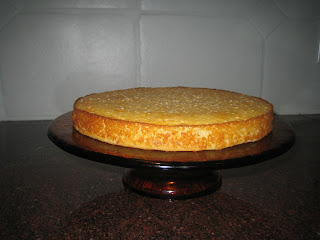
Last Tuesday, April 21, I joined an amazing group of bakers from throughout California to celebrate the 20th anniversary of the Baker’s Dozen.
How important was this event? Well, when I received my jury duty notice to appear that exact day for jury duty, I quickly asked for a postponement until the next day.
And I made the right decision. This was my first meeting as a member of this group and I’ve never seen that much baking prowess assembled under one roof.
More than 70 bakers from the Napa Valley to San Diego came together at Foreign Cinema restaurant on a sweltering day in San Francisco to reminisce and of course to eat.
The Baker’s Dozen was founded 20 years ago by well-known cookbook author and baking teacher, Marion Cunningham and professional baker, Amy Pressman. Their idea for the group was simple: what if groups of like-minded bakers were to meet to exchange ideas and solve baking problems?
Their two goals for the group then and now are: share what you know about baking and learn from one another. They have no officers, no dues or newsletters. And you don’t need to be a professional baker to join; many members are dedicated home bakers – like me!
It’s just all about the baking. And as Baker’s Dozen member, cookbook author and teacher, Flo Braker observed, “we came with our passion for baking and not our egos.”
An oft-told story of the first meeting is how 40 bakers showed up with forty lemon meringue pies. The topic of the meeting was weeping and shrinking meringues and how to prevent them from happening. In a nod toward that first meeting, a question posed just a week before on the Baker’s Dozen website to all the bakers was on that very topic.
According to member Nancy Kux, “there isn’t much new under the sun in baking but there is always someone who is attempting a recipe for the first time and would welcome the knowledge of the Baker’s Dozen membership.”
In fact, this week I made a cheesecake. When a massive crack appeared in the top of my beautiful cake, I turned to the Baker’s Dozen online forum for help. Within minutes I had answers from people whose cookbooks line my shelves!
Speaking of cookbooks, in 2001 these master bakers came together to produce and publish the Baker’s Dozen Cookbook. The book includes recipes and detailed baking techniques from such industry luminaries as Flo Braker, David Lebovitz, Marion Cunningham, Fran Gage, Peter Reinhart and many more.
But back to the celebration: In typical baker fashion, instead of traditional appetizers, we were asked to bring treats from the Baker’s Dozen cookbook – either the original recipe or our own version.
I took a deep breath and tried to put out of my mind all the more experienced bakers who would taste my cake. I selected Flo Braker’s Angel Food Cake from the Baker’s Dozen Cookbook.

If you didn’t look too closely, it looked pretty good. It only had a slight slope to the top. I have always seen angel food cake with a soft, brown crumbly exterior. But according to Braker, it should be snow white.
Hmmm. Time to start experimenting.
I met many amazing bakers: Cindy Mushet, Evie Lieb, Annie Baker (yes, baker) Shirley Lipscomb, Michael Recchiuti, Laura Martin Bacon and many more.
It was a day to remember. I look forward to our next meeting – I hear Harold McGee, well-known author of On Food and Cooking, might be speaking to our group. I’m already starting my list of questions.
Foreign Cinema is located in the Mission district of San Francisco. This area is home to a large Hispanic population. As I left the restaurant, I came upon a lovely woman selling what she called quesadilla cakes. But these cakes didn’t look like any quesadilla I had ever seen – not a tortilla or gooey cheese in sight. Using my very very limited Spanish, I discovered that it was a sweet cake similar to a pound cake. I, of course, bought one to take home to devour and to figure out how it was made.
It was indeed very lightly sweetened but with a subtle savory taste. A quick internet search revealed that the cake is traditionally served as a coffee cake in El Salvador. The savory flavor I tasted was cheese. I discovered that parmesan cheese is typically used although some recipes I saw found specified queso fresco, a fresh farmers-type cheese or a similar Spanish cheese called cuajada.
Epicurious.com had a recipe so out came the baking pan and bowls. The recipe took all of ten minutes to mix together and pop in the oven. I liked a slice with a cup of tea and my teenager snacked on it as she drove to school. I will happily add it to my repertoire of great snacking cakes.

Why am I telling this story of my quesadilla cake? It seemed a fitting end to the Baker’s Dozen meeting to discover a new delicacy and to figure out where it came from and how it was made.
And of course, also in typical Baker’s Dozen fashion, I’m sharing the story and the recipe with everyone.














